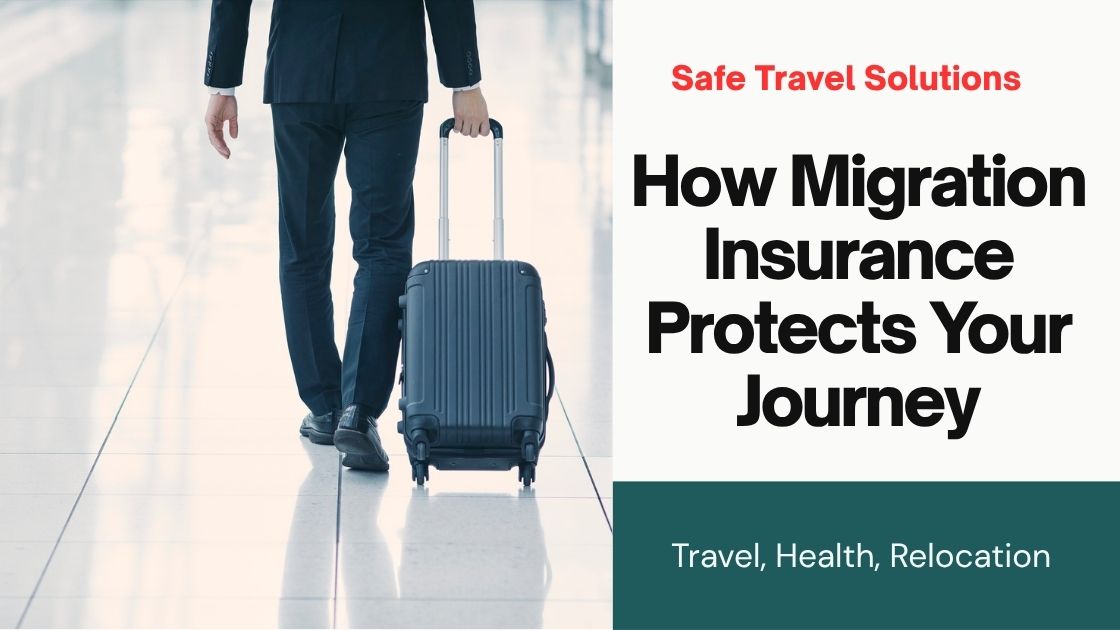Picture two travelers at the gate. Alex is off on a two-week surf holiday in Bali. Rita migrationInsurance Coverage Options: A Comprehensive Guide to Protecting Your Future 2025 boarding with three suitcases, a remote-work visa, and no return date. Both bought “travel insurance”—or so they think. Fast-forward one month: Alex’s luggage was delayed but covered. Rita has a dental emergency in Lisbon, learns her policy expired after 30 days, and ends up footing a €1,400 bill.
The moral? Not all insurance with the word “travel” on it is built for life abroad. In 2025, choosing the wrong cover can cost far more than the policy itself. This guide breaks down the real-world differences between travel insurance and migration (a.k.a. expat) insurance, shows when each one shines, and arms you with practical tips to protect both your adventure and your long-term relocation plans.
Picture two travelers at the gate. Alex is off on a two-week surf holiday in Bali. Rita is boarding with three suitcases, a remote-work visa, and no return date. Both bought “travel insurance”—or so they think. Fast-forward one month: Alex’s luggage was delayed but covered. Rita has a dental emergency in Lisbon, learns her policy expired after 30 days, and ends up footing a €1,400 bill.
The moral? Not all insurance with the word “travel” on it is built for life abroad. In 2025, choosing the wrong cover can cost far more than the policy itself. This guide breaks down the real-world differences between travel insurance and migration (a.k.a. expat) insurance, shows when each one shines, and arms you with practical tips to protect both your adventure and your long-term relocation plans.
1. Quick Definitions—Because Jargon Is Expensive
| Concept | Travel Insurance | Migration (Expat) Insurance |
| Typical Duration | Single trip (up to 180 days) or annual multi-trip | Six months to multi-year, renewable |
| Core Focus | Trip mishaps: cancellations, lost bags, short-term medical | Ongoing health care + relocation risks |
| Medical Limits | Often US $100 k–500 k | US $500 k–2 million (or unlimited) |
| Extras | Trip delay, baggage, rental-car excess | Routine care, chronic conditions, liability, evacuation, even income-gap benefits |
| Visa Compliance | Rarely satisfies long-stay or digital-nomad visas | Designed to meet residency/visa rules in 30+ countries |
Bottom line: Travel insurance is a time-limited safety belt; migration insurance is a 360-degree airbag that stays inflated for the whole journey.
2. Why Context Matters More Than Price
2.1 Trip-Based Risk: One-Off Emergencies
Most travel-insurance claims fall into three buckets—medical (80 %), trip cancellation (15 %), and luggage issues (5 %). These are acute, “fix it and forget it” events: a sprained ankle, a missed connection, a soaked laptop.
2.2 Relocation Risk: Long-Game Uncertainty
Move abroad and the risk profile flips. You face:
- Waiting periods before public health care kicks in (three months in Canada, up to six months in Spain)
- Continuous access to prescriptions and routine check-ups
- Liability if your rental springs a leak or you crash a borrowed scooter
- Potential visa denial without proof of comprehensive cover (now mandated by Spain, Portugal, Germany, Thailand, and dozens of digital-nomad programs)
Travel policies rarely touch those issues; migration policies are built for them.
3. Coverage Showdown—What Each Policy Really Pays For
3.1 Medical Care
- Travel Insurance: Emergency-only, often capped under US $500 k, no chronic-care benefits.
- Migration Insurance: Higher ceilings (US $1–2 million) and continuity—routine GP visits, vaccinations, maternity (after a wait), mental-health sessions, and even cancer care on premium tiers.
3.2 Medical Inflation Protection
Global medical costs will climb 10 % again in 2025. A one-night U.S. hospital stay can exceed US $10 k; an emergency evacuation from Thailand to Singapore recently topped US $50 k. High-limit migration plans absorb those spikes. Many travel policies don’t.
3.3 Evacuation & Repatriation
Travel plans cover air ambulances during a trip; migration plans keep covering you after you’ve signed a lease and planted roots, including non-medical evacuations (political unrest, natural disasters) and repatriation of remains
3.4 Liability & Property
Crack a landlord’s marble countertop? Migration insurance can cover the €4 k invoice. Travel policies usually won’t touch long-term housing damage.
4. When Travel Insurance Is Truly Enough
- Trip length is under 90 days and you’ll return to home coverage.
- Primary goal is refund protection for prepaid tours, flights, or hotels.
- Medical needs are minimal and you’re visiting low-cost destinations.
- Visa rules don’t demand more. (e.g., a two-week holiday in Thailand vs. a six-month volunteer stint.)
Pro tip: Buy at booking, not at boarding; 27 % of Brits still wait until departure day and forfeit pre-departure cancellation protection
5. Signs You Need Migration Insurance Instead
- You’ll stay abroad 90 days or longer. Travel coverage timelines won’t renew mid-trip without a border run.
- Your visa application requires “comprehensive private health insurance.” Spain’s digital-nomad visa rejects policies with deductibles or waiting periods
- You want coverage for chronic conditions, maternity, or mental health. Travel insurance calls those “foreseeable,” so they’re excluded.
- Portability matters. Plan to hop countries? Migration policies can follow you across borders (within your chosen zone).
- You’re relocating family or expensive gear. Higher personal-property and liability limits protect both.
6. Actionable Tips to Pick the Right Policy
- Map your timeline. Under 90 days? Travel insurance might suffice. Over 90? Start with migration quotes.
- Run the “Visa Checklist.” Any requirement for zero deductibles, day-one activation, or proof of coverage = migration policy.
- Price by zone. Excluding the U.S. and Singapore can shave 30–40 % off premiums.
- Check direct-billing networks. The best migration plans pay hospitals directly; no maxing out your credit card first.
- Compare medical ceilings, not just premiums. A US $100 k cap looks fine—until you need a US $150 k spinal surgery.
- Bundle wisely. Some insurers let children under 10 ride free, or give 5 % multi-policy discounts.
- Set renewal reminders. A 30-day lapse can void pre-existing-condition waivers—use your calendar.
- Digitize everything. Scan passports, receipts, lab results to cloud storage; faster uploads equal faster payouts.

7. FAQs
Q1. Can I hold both policies at once?
Absolutely. Many expats keep an annual travel plan for short business trips plus a migration policy for daily life. Just avoid double-claiming.
Q2. Is migration insurance required everywhere?
No, but 30 + countries now mandate private health insurance for long-stay or nomad visas, and the list grows yearly
Q3. I’m a digital nomad moving monthly—what’s best?
Look for migration policies with worldwide (or multi-zone) coverage and month-to-month billing. Some brands allow enrolment after departure, unlike most travel plans.
Q4. Does travel insurance cover pandemics now?
Roughly 64 % of 2023 policies added pandemic clauses, but coverage varies—read the fine print for testing, quarantine, or border-closure reimbursement
Q5. Are pre-existing conditions ever covered?
Usually only on migration policies, and sometimes after a waiting period or medical underwriting. Travel insurance nearly always excludes them.
Conclusion
Whether you’re chasing sunsets for two weeks or chasing a dream for two years, the right insurance turns potential catastrophes into minor speed bumps. Travel insurance is the quick, affordable fix for short adventures. Migration insurance is the deep-coverage partner that grows with your new life abroad.
Your 20-Minute Challenge
Open two browser tabs—one for a reputable travel insurer, one for a migration-insurance provider. Plug in your trip length, destinations, and medical needs. Compare the gaps you spot. That single exercise could save you weeks of financial and emotional stress later.
Now we want to hear from you: What’s your best time-management trick for juggling visas, packing, and policy shopping? Share it in the comments—because when we save each other time, we all get more of the world to explore.
